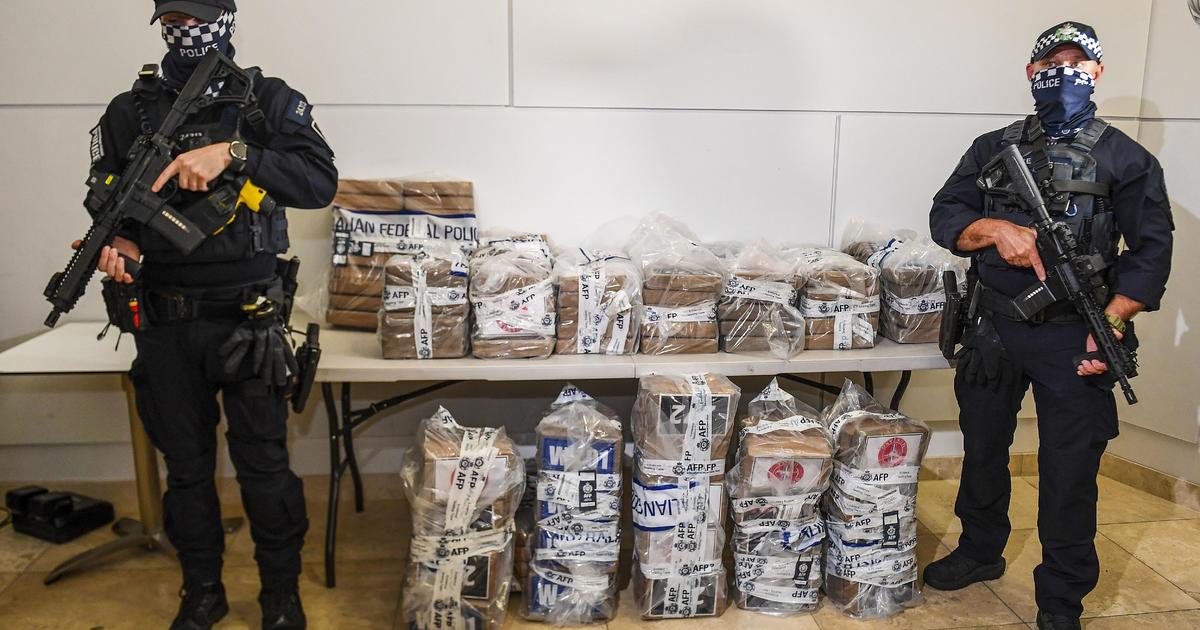Introduction
In a major breakthrough for global law enforcement, authorities in Australia recently confiscated a staggering 2.3 tons of cocaine from a fishing vessel stranded off the coast. This daring operation, which occurred in international waters, marks one of the largest drug seizures in the region’s history. The bust not only underscores the increasing sophistication of drug trafficking networks but also sheds light on the critical role that maritime trade routes play in the global narcotics trade. As authorities continue to investigate the origins and potential networks behind this shipment, the operation raises several pressing questions about the mechanisms of drug trafficking, the vulnerabilities of global shipping routes, and the broader implications for organized crime. This article delves into the details of the seizure, explores the context behind it, and examines the broader challenges faced by law enforcement agencies in combating international drug trafficking.
The Seizure: An Overview
The 2.3 tons of cocaine were discovered by Australian authorities after the fishing boat, which had been reported as stranded, was flagged for inspection. The vessel, whose crew had abandoned ship due to mechanical failure, was initially thought to be a routine maritime incident. However, once authorities boarded the boat, they uncovered dozens of hidden compartments filled with tightly wrapped packages of cocaine. The drugs, valued at an estimated $1 billion on the street market, were likely destined for Australia or were intended to transit through the country on their way to other markets in Asia and Europe.
The Scale of the Seizure
This drug bust is significant not only because of its size but also due to the method of smuggling used. Drug traffickers often employ sophisticated tactics to conceal illicit substances on vessels. These methods can range from hidden compartments in the hull to even specialized coatings that hide the drugs from routine detection by law enforcement. The fact that such a large amount of cocaine was smuggled on a single vessel underscores the sheer scale of the operations conducted by these criminal organizations.
Drug Trafficking: A Global Phenomenon
The interception of this massive shipment highlights the continued threat posed by drug trafficking across international borders. The global nature of the narcotics trade means that law enforcement must contend with well-organized syndicates that operate across various continents, utilizing a network of transport routes that often defy traditional borders. In recent years, the maritime industry has become a significant vector for smuggling operations, with traffickers taking advantage of the vast expanse of open waters and the complex logistics of international shipping.
Shipping Routes as Critical Pathways
The seas have long been used by smugglers to bypass traditional land-based customs inspections. Global trade routes, which move billions of dollars in goods every day, also provide traffickers with opportunities to conceal illicit cargo among legitimate shipments. While countries like Australia have strengthened their maritime security and surveillance systems, the vastness of international waters and the number of commercial vessels in operation make it extremely difficult to effectively monitor every ship. As a result, drug cartels have adapted, using both large cargo ships and smaller vessels like fishing boats to move drugs across vast distances.
- South America remains one of the primary sources for cocaine, with Colombia, Peru, and Bolivia being key producers.
- Mexico and Central America play a pivotal role in transshipment, with cartel-controlled networks moving drugs through the region to the United States and beyond.
- Australia, as an affluent destination, has seen increasing amounts of cocaine smuggled into its shores, contributing to rising addiction and violence linked to the drug trade.
The Implications for Law Enforcement and Maritime Security
The discovery of such a large cocaine haul brings attention to the ongoing challenges faced by law enforcement and border security agencies. While technological advancements such as satellite monitoring, radar, and drone surveillance have improved maritime security, the vastness of the ocean and the number of daily ship movements make it difficult to detect illicit activities. In response to these challenges, countries are increasingly sharing intelligence and collaborating on joint operations to disrupt drug trafficking networks before they can unload their contraband.
The Role of International Cooperation
Efforts to combat drug trafficking require a multilateral approach. Drug cartels operate on an international scale, and so must law enforcement efforts. Countries around the world must cooperate to ensure the security of global shipping lanes. Organizations like INTERPOL and the United Nations Office on Drugs and Crime (UNODC) play vital roles in fostering international collaboration and intelligence-sharing among law enforcement agencies. With the volume of drugs flowing across borders, efforts to intercept and dismantle these trafficking networks must involve sophisticated logistics and strategic planning at the global level.
For example, Australia’s Border Force has been working with its counterparts in Southeast Asia and South America to monitor drug smuggling operations. Collaboration with countries like the United States, which also faces a high demand for illegal narcotics, further enhances the ability to track and intercept drug shipments before they reach their destination.
Broader Economic and Social Impacts
The seizure of such a large quantity of cocaine also has broader implications for the local and global economy. For Australia, the bust signifies a significant win in the fight against drug-related crime. However, the broader issue of drug trafficking impacts not just law enforcement agencies but also the economic and social fabric of affected regions. The drug trade has been linked to a variety of social problems, including addiction, violence, and organized crime. In Australia, cocaine use has been on the rise, contributing to increased demand and, consequently, a larger black market.
Organized Crime and Its Link to Corruption
At the heart of the global drug trade lies a network of criminal organizations that operate with impunity in many parts of the world. These syndicates often use their vast wealth to infiltrate and corrupt political and law enforcement systems, allowing them to conduct operations with minimal interference. In regions where law enforcement is underfunded or compromised by corruption, traffickers face few barriers to smuggling illicit substances into consumer markets.
Conclusion: The Fight Against Drug Trafficking
The 2.3-ton cocaine seizure off the Australian coast is a sobering reminder of the ongoing challenges posed by international drug trafficking. As trafficking networks evolve and adapt to increasingly sophisticated security measures, law enforcement agencies must continue to innovate in their approach to combating this global menace. This seizure, though significant, is but one victory in a long and difficult battle against organized crime. The ultimate success of this fight will depend on continued international cooperation, better use of technology, and an unwavering commitment to dismantling the networks that profit from the destruction of lives and communities worldwide.
As authorities continue their investigation into the origins of this shipment, it remains clear that the fight against narcotics trafficking is far from over. For more information on global anti-narcotics operations, visit the United Nations Office on Drugs and Crime (UNODC).
See more NY Times Report



